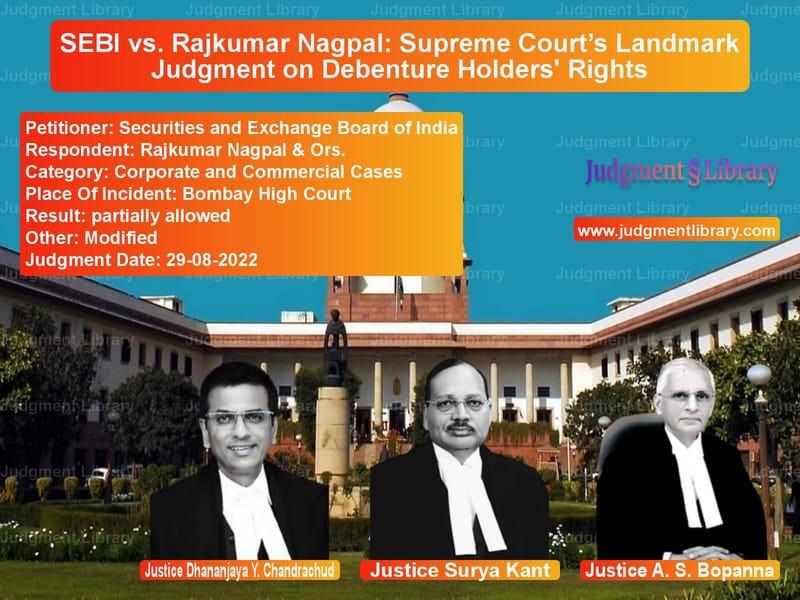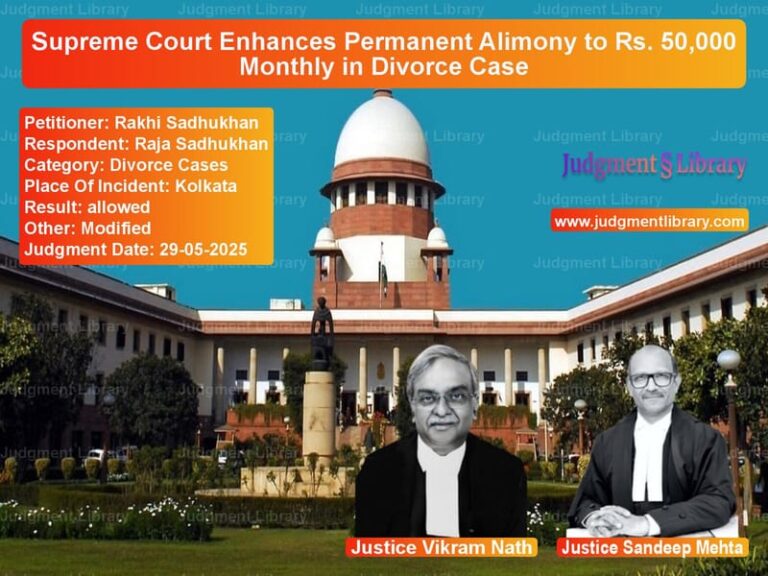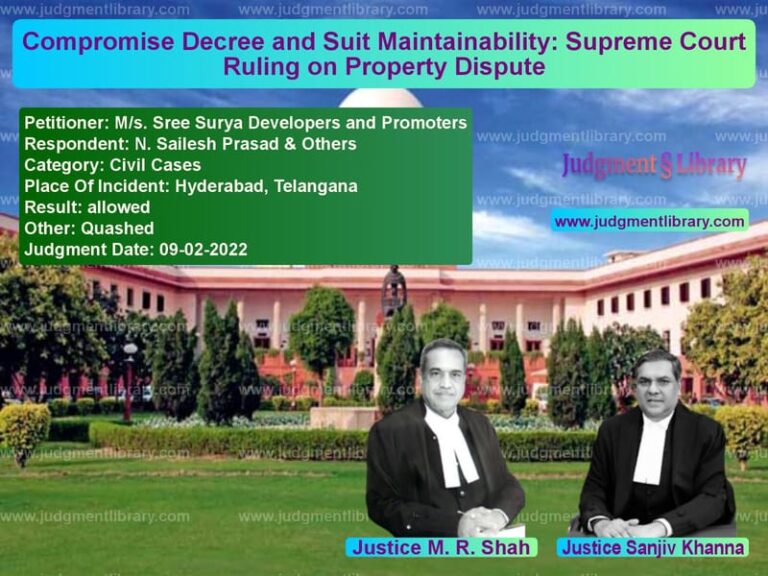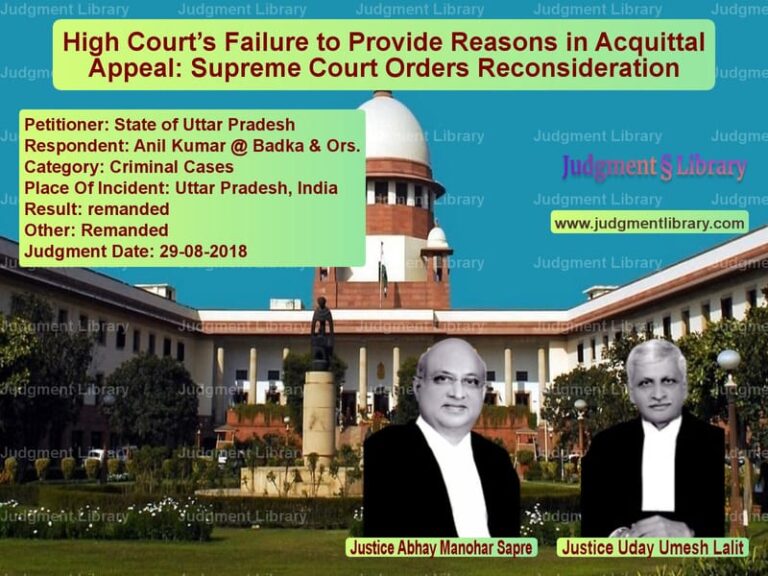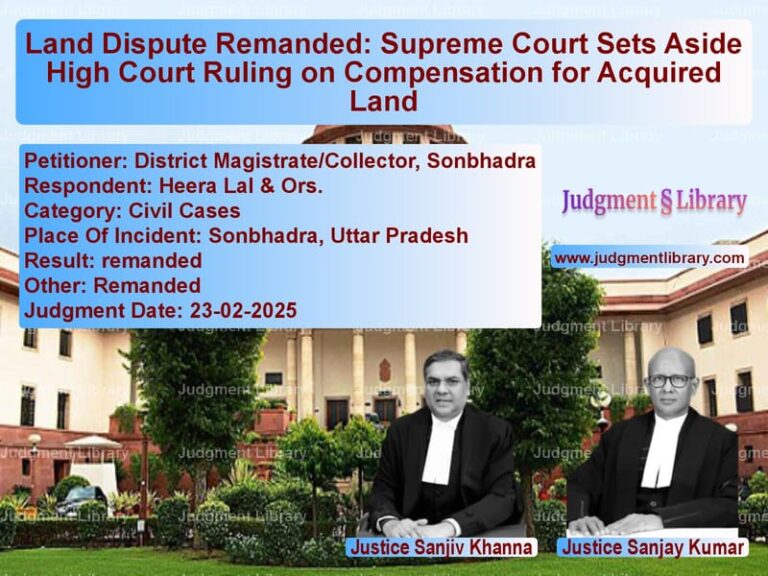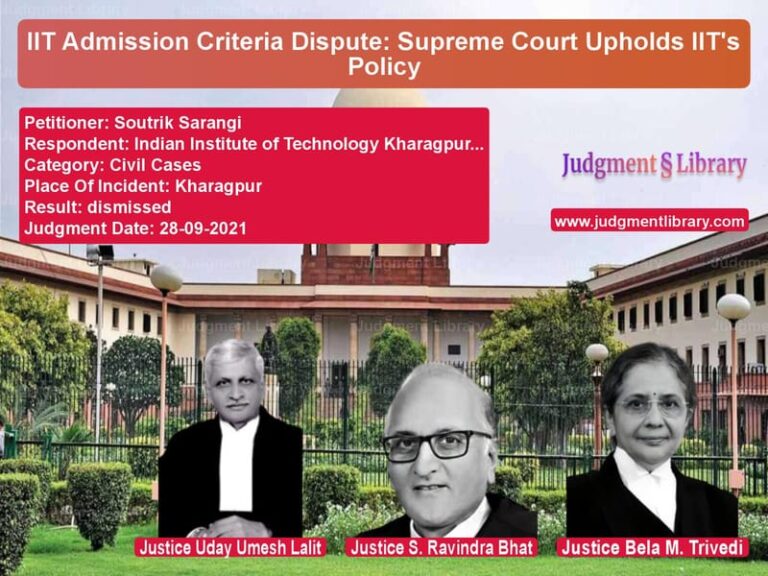SEBI vs. Rajkumar Nagpal: Supreme Court’s Landmark Judgment on Debenture Holders’ Rights
The Supreme Court of India, on August 30, 2022, delivered a significant judgment in the case of Securities and Exchange Board of India (SEBI) vs. Rajkumar Nagpal & Others. This case centered on the interpretation and applicability of SEBI’s circular dated October 13, 2020, which established guidelines for debenture trustees in cases of default by issuers of non-convertible debentures (NCDs).
The ruling clarified whether SEBI’s regulatory framework applies retroactively and to what extent debenture holders can influence debt resolution processes. The Supreme Court’s judgment reaffirmed SEBI’s regulatory power while balancing the interests of retail investors and institutional creditors.
Background of the Case
The dispute originated from financial difficulties faced by Reliance Commercial Finance Limited (RCFL), which had issued non-convertible debentures (NCDs) worth thousands of crores to institutional and retail investors. RCFL defaulted on its obligations, leading to concerns among debenture holders about how the resolution process should be conducted.
In response to growing concerns about financial stability and transparency, SEBI issued a circular on October 13, 2020, setting out a standardized procedure for debenture trustees handling default situations. This included mandatory approval from 75% of debenture holders by value and 60% by number before enforcement of security or inter-creditor agreements (ICA).
Several investors challenged the applicability of this circular, arguing that it could not be applied to defaults that had occurred before its issuance. The Bombay High Court ruled in favor of the investors, stating that SEBI’s circular could not have retrospective effect and should not apply to agreements already in place.
Key Issues Before the Supreme Court
The Supreme Court had to determine:
- Whether SEBI’s October 13, 2020 circular applied retroactively to defaults that had already occurred.
- The extent of debenture holders’ rights in influencing resolution plans.
- Whether the SEBI circular could override pre-existing contractual agreements between issuers and investors.
Arguments from the Petitioner (SEBI)
SEBI, represented by its legal counsel, made the following arguments:
- The circular was procedural, not substantive: SEBI argued that its guidelines did not impair vested rights but merely established a framework for how debenture trustees should act moving forward.
- Investor protection and market uniformity: The regulatory framework was necessary to protect retail investors and maintain uniformity in financial resolutions.
- Preventing arbitrary settlements: The circular ensured that debenture holders were not forced into settlements without adequate consent mechanisms.
- The Bombay High Court misinterpreted regulatory intent: SEBI contended that the lower court’s ruling weakened the regulator’s ability to enforce fair debt resolution mechanisms.
Arguments from the Respondents (Rajkumar Nagpal & Others)
The respondents, representing debenture holders, countered:
- The circular should not be applied retroactively: Investors had entered agreements based on prior regulations, and imposing new consent requirements would be unfair.
- Debenture holders had existing rights under trust deeds: The contractual agreements already gave investors certain protections, which should not be overridden.
- Legal certainty in financial markets: Allowing retrospective regulatory changes would create uncertainty in financial markets, discouraging future investment.
- The High Court’s ruling protected investors: The lower court had rightly upheld investor discretion in negotiating separate settlements.
Supreme Court’s Observations
1. SEBI’s Regulatory Authority
The Supreme Court upheld SEBI’s authority to regulate debt instruments and enforce standardized mechanisms:
“The regulatory framework established by SEBI is essential to ensure that all investors, especially retail debenture holders, have a structured mechanism for influencing resolution processes.”
2. Partial Retroactive Application of the Circular
The Court ruled that while the SEBI circular could not override past agreements, it applied to ongoing resolution efforts:
“The SEBI circular does not interfere with past contracts but governs the procedure for future restructuring agreements and investor participation.”
3. Ensuring Investor Consent
The Court emphasized that debenture holders should have a say in the resolution process:
“Debenture holders cannot be forced into a resolution plan without meeting the thresholds prescribed in the SEBI circular.”
4. Balancing Regulatory Intent with Legal Certainty
The Court struck a balance between SEBI’s objectives and investor rights:
“Regulatory changes must be implemented in a manner that does not disrupt financial markets but ensures better investor protection.”
Final Judgment
The Supreme Court modified the Bombay High Court’s ruling and held:
- The SEBI circular is prospective but applies to ongoing resolution efforts.
- Debenture holders retain their contractual rights under existing agreements.
- The circular ensures that investors cannot be forced into settlements without meeting SEBI’s consent requirements.
- The regulatory framework does not override past agreements but governs future transactions.
Implications of the Judgment
The ruling has wide-reaching consequences for financial market regulation:
- Strengthens SEBI’s regulatory role: The judgment affirms SEBI’s authority in setting market standards.
- Protects retail investors: The decision ensures that small investors are not sidelined in debt resolution processes.
- Provides legal certainty: The ruling clarifies how regulatory changes affect existing and future agreements.
- Encourages uniform debt resolution practices: The decision promotes structured resolution mechanisms in bond markets.
Conclusion
The Supreme Court’s judgment in SEBI vs. Rajkumar Nagpal establishes a crucial precedent for financial market regulation. By ensuring that regulatory changes are implemented fairly, the ruling reinforces investor protection while upholding SEBI’s authority. This judgment will serve as a reference point for future cases involving financial regulation and market stability.
Petitioner Name: Securities and Exchange Board of India.Respondent Name: Rajkumar Nagpal & Ors..Judgment By: Justice Dhananjaya Y. Chandrachud, Justice Surya Kant, Justice A. S. Bopanna.Place Of Incident: Bombay High Court.Judgment Date: 29-08-2022.
Don’t miss out on the full details! Download the complete judgment in PDF format below and gain valuable insights instantly!
Download Judgment: securities-and-excha-vs-rajkumar-nagpal-&-or-supreme-court-of-india-judgment-dated-29-08-2022.pdf
Directly Download Judgment: Directly download this Judgment
See all petitions in Corporate Governance
See all petitions in Company Law
See all petitions in unfair trade practices
See all petitions in Mergers and Acquisitions
See all petitions in Shareholder Disputes
See all petitions in Judgment by Dhananjaya Y Chandrachud
See all petitions in Judgment by Surya Kant
See all petitions in Judgment by A. S. Bopanna
See all petitions in partially allowed
See all petitions in Modified
See all petitions in supreme court of India judgments August 2022
See all petitions in 2022 judgments
See all posts in Corporate and Commercial Cases Category
See all allowed petitions in Corporate and Commercial Cases Category
See all Dismissed petitions in Corporate and Commercial Cases Category
See all partially allowed petitions in Corporate and Commercial Cases Category

